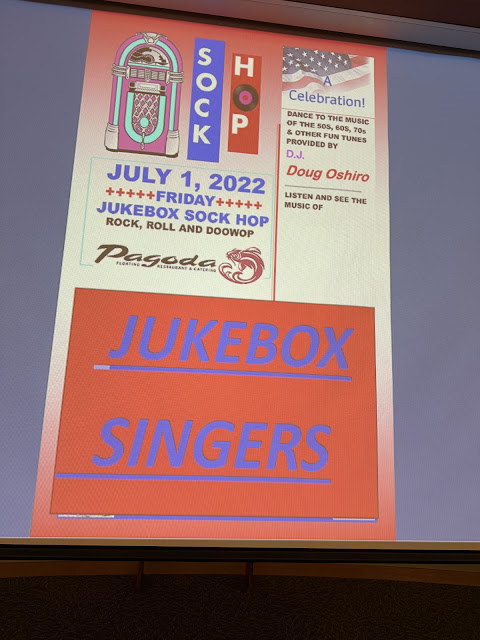 Those TV shows like America's Got Talent and American Idol keep deprecating a mediocre contestant as only good enough for karaoke. If you want to watch an embarrassingly bad singer, attend any karaoke session. As terrible as you might be, there almost surely will be someone worse. But that's okay, for in most cases, these are the ones who get the most applause.
Those TV shows like America's Got Talent and American Idol keep deprecating a mediocre contestant as only good enough for karaoke. If you want to watch an embarrassingly bad singer, attend any karaoke session. As terrible as you might be, there almost surely will be someone worse. But that's okay, for in most cases, these are the ones who get the most applause.- First of all, it is not something like Sing Along with Mitch (Miller) and his band from 1961-66. Sure, the lyrics played across the bottom of the TV screen, but there is no personal pressure, for everyone in the room is singing.
- Most authorities cite Kobe, Japan musician Daisuke Inoue, in 1971, for inventing the karaoke machine. Thus, the Japanese name, Kara (meaning empty) oke (for okesutora, the phonetic Japanese word for orchestra). Japan enhanced the experience by creating karaoke booths, smaller boxes or rooms, where you could sing with your friends or family.
- In 1975, Roberto del Rosario of the Philippines filed a patent for the karaoke machine.
- The concept reached the USA in 1982, Los Angeles bar Dimples, now closed.
- There is a Karaoke World Championship, in Finland, which began in 2003 and typically receives contestants from 30 countries. Then again, maybe not, for there is nothing scheduled for this year, and various spots around the world have world championships.
- The world market today is around $10 billion, with the U.S. at an annual $1.26 billion.
- Leonardo Polverelli of Italy holds the record for the longest karaoke marathon...101 hours, 59 minutes and 15 seconds. Sang 1,295 songs to raise funds for a telethon.
Best Buy lists several karaoke machines, from $30 to $350. Amazon has more than 50 from $10 to $450. The one below is only $60. A foursome will pay a lot more for one hour in a karaoke room with one drink each in Tokyo.
- No songs by the Beatles, Rolling Stone, Mariah Carey or Michael Jackson.
- #1 Shania Twain, Man! I Feel Like a Woman, 1998.
- #2 Backstreet Boys, I Want It That Way, 1999.
- #3 Gloria Gaynor, I Will Survive, 1979.
- #26 Neil Diamond, Sweet Caroline, 1969. I have been known to sing this song, but only with someone else.
- #32 Journey, Don't Stop Believin', 1981. Richard Goodall won America's Got Talent last year with this song. Just watching Simon Cowell's initial reaction is priceless. Here he is singing with Journey. So what happened to Goodall after he won?
- #51 Frank Sinatra, My Way, 1969. One of my staples.
- Certainly, this list must be for the USA only.
From Singa, the most popular karaoke songs in the U.S.
- But maybe it might be, for these same songs are on the top 100 in the UK.
- Here are Japan's most popular karaoke songs. Slightly different from Singa, for Sukiyaki is #2, and not even mentioned in that other. Kyu Sakamoto was in that Japan Air flight 40 years ago that crashed, killing 520.
- Top international karaoke songs in Japan:
- Ten singable Chinese songs.
- Easiest karaoke song to sing: I Love Rock and Roll, Joan Jett.
1. Tom’s Diner – Suzanne Vega
2. Sweet Caroline – Neil Diamond
3. Friends in Low Places – Garth Brooks
4. These Boots Are Made for Walking – Nancy Sinatra
5. 500 Miles – The Proclaimers
DJ Doug Oshiro chatting with Mel Aoki, who also hosts karaoke sessions here
Okay, not really Donald Trump singing karaoke. Kind of looks like Trump in an America's Got Talent audition. Or political parody. What about Baby Shark? The Donald Trump from 1980 to the present. Fourteen years ago, Barack Obama roasting Trump, with Trump in the audience. Finally, the 10 funniest Donald Trump Impressions.
-


















Comments
Post a Comment